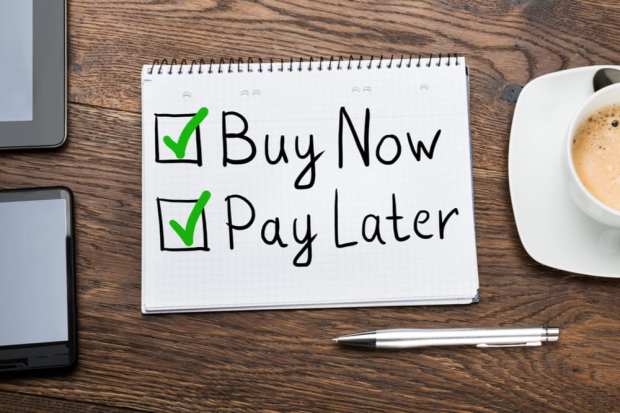Where Are Buy Now, Pay Later Solutions Headed Next?

Sorry, Halloween — you offer so much fun and so much decadence. But these days, at least when it comes to payments and commerce, you are becoming just a stepping stone to the holiday shopping season.
And as that all-important season approaches — have you seen your first Christmas-themed commercial yet? Merchants of all types are racing to gain an edge so they can increase sales and perhaps breathe easier for a little bit come January.
To gain that edge, merchants are increasingly turning to new buy now, pay later solutions at the point of sale (POS). It looks certain that in the first year of the new decade, online installments will play an even bigger role in commerce and digital payments.
To gain a better sense of what’s happening, Karen Webster from PYMNTS recently caught up with Josh Abramowitz, CEO at Bread, a 5-year-old digital payments platform that works with over 300 retailers and is hoping to make a splash during this upcoming holiday shopping season and beyond.
The discussion took place as Bread is expanding its offerings. On Monday (Oct. 28), the company launched Bread Edge. The company describes Edge as the only full-funnel payment personalization engine on the market, since it is fully optimized for a shopper’s cart size and that serves up the right payment options at the right time.
With Edge, retailers can now offer Bread’s existing high-AOV installment solution plus SplitPay, which is Bread’s new low-AOV credit and debit card-based solution that enables consumers to split less expensive purchases into four equal interest-free payments, all on one platform.
Many retailers have a broad range of AOVs on their sites. A grill may cost several thousand dollars, while a grill accessory may cost a few hundred. Bread aims to optimize solutions for each purchaser. SplitPay makes sense for consumers who are considering inexpensive purchases, and the installment product makes sense for larger purchases.
According to what Abramowitz told Webster, one way for providers to stand out from others is to offer bundled services to merchants, who, at least in general, are always on the hunt for more effective payment options.
Sales Boost
After all, more payment options serve not only to attract new customers, but tend to spark increased sales. And that’s the case with buy now, pay later solutions, as Bread’s experience so far has demonstrated.
“We’ve been blown away by the results,” Abramowitz told Webster.
That is especially true with the multiple options of SplitPay and other loan installment options — giving merchants more options to offer their consumers means fewer consumers are likely leaving behind their online shopping carts before buying. In particular, being able to tailor payment options across a spectrum of categories and purchase amounts boosts those conversion odds even higher. Buying four pillows for $150 or buying the $1,500 sofa that might, at some point, go with them, requires two different installment payments opportunities for the consumer.
Abramowitz described the process as one that prompts, under the merchant’s own brand, installment plan options on product pages. Decisioning is fast, without the need for a lengthy application.
That’s the power of APIs and data, and it’s helping to fuel this growing buy now, pay later trend. Earlier this year, for instance, Mastercard said it had acquired POS financing provider Vyze for an undisclosed sum. Affirm recently partnered with Walmart to help finance purchases over $150 and capped at $2,000. Square late last year introduced an installment plan offering. That shows that even the biggest players in payments have caught this particular wave.
Millennial Payment Habits
One reason for that? Shifting consumer habits.
Specifically, millennial consumers — coming into their own and nearing their peak earning years — are turning to POS financing options, according to research. Millennials do not embrace credit cards as readily as other groups of users, and it has been estimated that roughly 33 percent of millennials have them.
Tapping into consumer habits is not the only key to success in this growing world of installments and buy now, pay later solutions, Abramowitz emphasized. Making it easy to integrate on the retailer’s site is also vital — no merchant really has the time or inclination to deal with complex, often frustrating technical work on the back end. So too, he said, is being able to offer this service to the consumer via the merchant’s brand.
“We don’t force merchants to conform to our branding,” he said.
For now, Bread is focused on growing its merchant base and making serious gains during the holiday shopping season — gains that could further prove the worth of buy now, pay later programs in general. Early results, he said, are promising for the new installment options powered by the Bread Edge platform.
“We’ve really been struck by the power of these solutions,” Abramowitz told PYMNTS.
